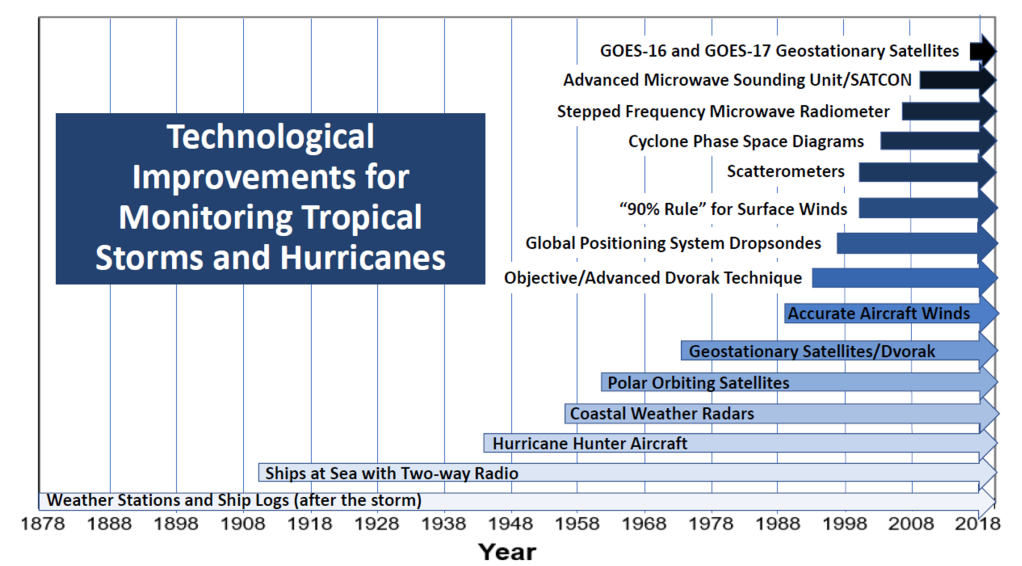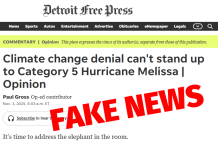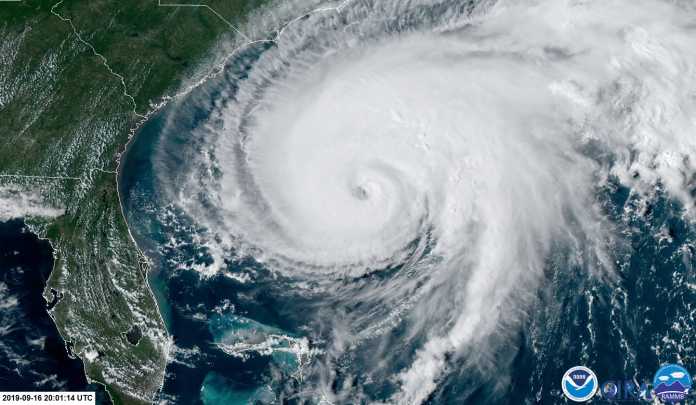One of the most common and often repeated claims by climate alarmists is that hurricanes are getting worse due to climate change; more of them, stronger ones, or both.
A new paper published in Nature Communications demonstrates both premises are false. It finds lack of technology in the past allowed us to miss many, many, tropical storms and hurricanes, giving the false impression that there were fewer storms in the past compared to today. Because they weren’t seen, they weren’t recorded.
The Phys.org release about the study, titled “Old-school data suggests hurricanes in the Atlantic are not more frequent than in the past,” explains that an international team of researchers based at a number of different universities and research institutes in the United States compared historical data from as far back as 1851 to recent satellite data. The satellite data indicate the number of hurricanes has been increasing in the Atlantic Ocean in recent years. The Nature Communication study shows the reported hurricane increase is not related to global warming but is due instead to historical undercounting of hurricanes and natural weather patterns. As Phys.org writes:
Prior to [1972], data on hurricane frequency tended to come from eyewitness accounts, which left out many hurricanes that never touched land. In this new study, the researchers went back to the old record books to learn more about the frequency of hurricanes prior to satellites.
…
The researchers then calculated the ratios of hurricanes that never came ashore in modern times to those that did, and worked backwards using modern data along with math techniques to estimate the number of hurricanes going back to 1860 that were never recorded. They then plotted those numbers on a timeline.
…
Researchers found no evidence on the timeline of larger than normal numbers of hurricanes forming over the past few decades—instead, it showed that the numbers were on par with prior spikes in the late 1940s and early 1880s. They also found no evidence indicating that modern hurricanes are any more powerful than those in the past.
Bottom line: there appeared to be more hurricanes in the past few decades because we now have satellites to observe them. Before that, it was ship reports and landfall reports, and as we know, hurricanes don’t always hit land or cross shipping lanes.
Additional support for this finding comes from recent research published the National Hurricane Center (NHC) in June, titled “Was 2020 a Record-Breaking Hurricane Season? Yes, But. . .,”
The “but” is the fact that lack of observing technology in the past is creating a false impression of increasing hurricane numbers in the present. The NHC researchers write:
The answer is very likely technology change, rather than climate change. Today we have many advanced tools to help monitor tropical and subtropical cyclones across the entire Atlantic basin such as geostationary and low-earth orbiting satellite imagery, the Hurricane Hunter aircraft of the U.S. Air Force Reserve and National Oceanic and Atmospheric Administration (NOAA), coastal weather radars, and scatterometers (radars in space that provide surface wind measurements). In addition, the instrumentation and measuring techniques used by the satellites, aircraft and radars are continually improving. These technological advances allow us at the National Hurricane Center to better identify, track, and forecast tropical and subtropical cyclones with an accuracy and precision never before available.
Such technology, though, was not available back at the advent of the U.S. Signal Service’s tropical monitoring in the 1870s. Without these sophisticated tools, meteorologists in earlier times not only had difficulty in forecasting tropical cyclones, but they also struggled in even knowing if a system existed over the open ocean. In the late 19th and early 20th Centuries, the only resource hurricane forecasters could use to monitor tropical cyclones were weather station observations provided via telegraph. Such an approach is problematic for observing – much less forecasting – tropical cyclones that develop and spend most of their lifecycle over the open ocean. Here’s a timeline of critical technologies that have dramatically improved tropical meteorologists’ ability to “see” and monitor tropical cyclones:

The National Hurricane Center is the most advanced and respected authority on tropical storms and hurricanes in the world. It has concluded there is no evidence climate change has caused an increase in the number of hurricanes. When climate alarmists say otherwise, they are fabricating a talking point in order to frighten the public into thinking there’s a problem where none exists. Their goal seems to be motivating sharp government restrictions on fossil fuel use to fight supposed human-caused climate change.























